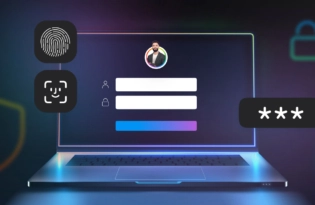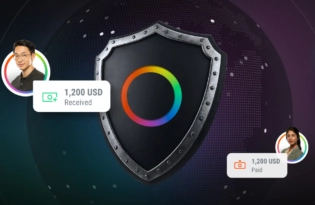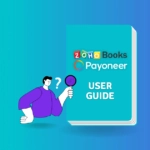Top challenges and solutions for receiving international payments from clients
When it comes to international payments, there are several things to consider when you’re billing overseas clients. Here we explore the challenges and solutions for doing business with global clients.

Bangkok-based entrepreneur Anurak was thrilled when he landed his first overseas customer. But then came the challenge of receiving payment from overseas.
Several weeks later, after enduring long payment processing delays, high transaction fees, poor exchange rates, and a series of compliance issues, Anurak wasn’t sure if his new customer was worth the hassle.
If you’ve ever tried to receive payment from abroad, this might sound familiar. But there is a better way…
SMBs need cross-border payment solutions to match their international growth
In 2023, there were approximately 358 million SMBs. Almost half (46%) of SMBs in Eastern Europe, Middle East, and Africa (EEMEA) are growing thanks to international sales, and by 2027 cross-border payments are set to reach 250 trillion USD. With numbers that large, efficiency is key.
For SMBs, smooth payment processing isn’t just a nice-to-have. It’s critical for business success. Fast, low cost, and secure international payments help to accelerate your growth. Cashflow remains stable. Suppliers and contractors can be paid on time. Inventory can be bought. Profitability is increased. All because your funds are not held up in frustrating delays or lost in high transaction fees.
Understanding the challenges of international payments
Spreading your wings and working with businesses outside your home country is hugely exciting. For many entrepreneurs, landing your first overseas client is a landmark moment in your journey.
But working with international clients carries inherent uncertainty. And it doesn’t take long for worries about the challenges of receiving money from abroad to start to surface. You’ll need to consider three main issues:
- Currency and exchange rates. Currency fluctuations can cause a project to be significantly less profitable. If you’re billing your client in their home currency, you need to be particularly mindful of this. On the day you agree your fee, the exchange rate will be at a certain level. If any exchange rate fluctuations don’t work in your favor, you could receive a smaller fee in your currency on the day you receive your payment. Check with your bank, too, about their currency conversion charges. Many operate ‘hidden’ fees that can be a nasty surprise.
- Regulatory and compliance hurdles. If you receive international payments, you’ll need to find a payments partner that can help with anti-money laundering (AML) and KYC compliance; data protection and privacy compliance; payment processor compliance; contractual and jurisdictional support; VAT/GST compliance (where appropriate); and currency and foreign exchange controls.
- Payment delays and high fees. Growing a business relies on good cashflow. But international payments often take longer than normal for banks to process. High conversion and processing fees on money from abroad can also negatively impact SMB profitability.
How to receive money: choosing the right payment methods
Each client you work with is likely to have a favored payment method. This will depend on their location, their business and banking set-up, and what’s most convenient for them. There are four main payment methods for receiving money from overseas, each with their own benefits and challenges.
- International bank transfers and wire payments are secure and highly reliable. The fees involved are also lower than paper checks and, in most cases, credit card processing. But even then, there are best practice tips that can reduce the fees even further. Instead of receiving money in a bank-to-bank transfer, you might want to consider finding a specialist online platform. These can reduce your fees and accelerate the process even further.
- Online payment platforms have been specifically designed to facilitate international transactions. Platforms like PayPal and Stripe enable you to receive money internationally via credit and debit card payments. You can also link specific checkout pages to your invoices, making the payment process even easier. As well as credit and debit card payments, platforms like Payoneer offer several other ways your global customers can pay you directly – all of which are designed to reduce your fees and quicken the time it takes for you to receive funds. All of the leading online payment platforms can be seamlessly integrated into most accounting and invoicing systems.
- Credit and debit cards offer reassurance and protection to clients sending you international payments. Your clients know their purchases are protected by their own banks. However, you’ll need to find an appropriate payment gateway and implement necessary security measures. Credit and debit card payments often come with high fees, which you’ll need to factor into your own profit and loss calculations. You should also take steps to minimize the risk of chargebacks, including using a recognizable trading name and providing full information to your clients.
- Alternative payment methods, such as cryptocurrency, e-Wallets, and mobile payments, can also be used. Over the last decade, cryptocurrency has emerged due to fast transactions and low fees. But it exposes you to significant risk via value volatility. E-Wallets and mobile payments are convenient to clients who are equipped with the right technology and devices. But in some markets, they may not be available.
Optimizing the payment process for international clients
Good businesses make things easy for their clients. They take care to remove every possible friction during the customer journey. Optimizing the payment process is a key element to receiving money from abroad. Consider adopting these best practices:
- Invoices. Make your payment terms clear and concise. Date each invoice accurately, writing out the month in full to avoid confusion over different date formats in different countries. Your invoice should include both your payment terms and the payment due date. Invoicing in your client’s local currency can also help accelerate your payment, because your client is not monitoring exchange rates and waiting for the best possible payment opportunity.
- Payment risks. If your client is particularly cautious, or the sums involved are significant, you may want to build trust by using as escrow service. This instantly mitigates payment risks, with funds initially given from your client to a third-party and only passed to you when all parties have met their transaction conditions. You may also want to investigate the possibility of conducting credit checks on new overseas clients, or demanding prepayment to avoid the risk of non-payment.
- Payment collection. Automated payment reminders are a great way to prompt overdue or delayed payments. If you’ve billed your client through your Payoneer account, automated payment reminders will automatically be sent – without you needing to do anything. In other invoicing and accounting platforms, you may need to actively choose for automated payment reminders to be issued. Some SMBs find that offering discounts or incentives for early or prompt payments is an effective way to improve cashflow.
Navigating international payment platforms and services
Today, there are several international payment platforms and services used by SMBs to receive international payments. Choosing the right payment processor comes down to understanding the needs of your business and your clients. Some typical factors to consider include:
- Fees. Are the fees low, acceptable, or prohibitively high? Be clear from the outset.
- Ease of use. Will your clients struggle to make their payment? Are you signing up to a major administrative burden?
- Supported currencies. Does your platform support the currencies in which you and your clients are trading?
- Software integration. Will your platform work hand-in-hand with your accounting or invoicing solution?
- Automatic reconciliation. Will you need to invest significant time in reconciliation, or will your platform and your accounting software handle everything automatically?
Future trends in international payments for SMBs
The ways businesses receive international payments has changed dramatically in the 21st century. Technological advances and changing expectations mean it is certain to continue evolving over the coming years.
Blockchain-based international payments don’t involve banks or their traditionally high fees. They are also proven to be exceptionally secure. While widespread trust and adoption of blockchain payments has not yet materialized, this payment method could prove to be a game-changer. In theory, blockchain payments are available anywhere an internet connection exists.
Instant payments, which involve funds being available within approximately 10 seconds of a payment being made, could also have a significant impact on the growth of SMBs. They help to reduce cashflow concerns because you no longer have to wait days to receive your funds.
Regulatory changes could also impact the way international payments are handled.
The best way to receive payment from overseas
Doing global business is great for your growth. It’s a concrete sign of your ambition to reach new markets. But there’s also lots to consider if you want to receive payment from an international client.
Before you reach any agreement with a client in a new territory, take time to understand the challenges of receiving money from abroad, try to determine the best possible way to accept international payments, and optimize the process wherever possible to make it easy to receive payments from overseas.
If your existing payment solution doesn’t have the functionality you need, open a Payoneer account today to get paid even faster and more securely – from anywhere in the world.
As you grow, it’s critical to stay up to date on global payment trends. With Payoneer by your side, you’ll always be ready to adapt to new technologies.
Disclaimer
Nothing herein should be construed as if Payoneer Inc. or its affiliates are soliciting or inviting any person outside the jurisdiction where it operates/is licensed to engage in payment services provided by Payoneer Inc. or its affiliates, unless permitted by applicable laws. Any products/services availability are subject to customer’s eligibility. Not all products/services are available in all jurisdictions in the same manner.
The information in this document is intended to be of a general nature and does not constitute legal advice. While we have endeavored to ensure that the information is up to date and correct, we make no representations or warranties of any kind, express or implied, about the completeness, accuracy, reliability or suitability of the information. In no event will we be liable for any loss or damage including without limitation, indirect or consequential loss or damage, or any loss or damage whatsoever incurred in connection with the information provided.
Related resources
Latest articles
-
How to prevent online payment fraud as an SMB
Prevent online payment fraud by overcoming challenges like phishing, fake accounts, and account takeovers (ATO) with enhanced security features from Payoneer.
-
A guide to starting a business in Estonia as a non-citizen
If you’ve thought about opening a new business somewhere with plenty of government support, expanding your business into the EU, or making it easier to work as a contractor or digital nomad anywhere in the European Economic Area (EEA), you should think about starting a business in Estonia…
-
Amazon Fees & Policy Updates 2024
Amazon regularly makes planned updates to fees and policies that may impact Payoneer customers that sell on Amazon. To keep Payoneer customers informed regarding upcoming and past updates, we’re providing a list of known changes to Amazon fees and Policy updates.
-
How Payoneer’s target exchange rate feature will help you save more on bank withdrawals
Boost savings with Payoneer’s target exchange rate feature.
-
Navigating phishing attacks: A guide to keeping your Payoneer account secure
Keeping your funds safe is our number one priority at Payoneer. While phishing attempts can happen, arming yourself with knowledge is key to keeping your data and money safe
-
Zoho Books and Payoneer integration guide
Learn how to seamlessly integrate Payoneer with Zoho Books. Follow our step-by-step guide to connect your accounts, create invoices, and manage payments efficiently. Optimize your financial operations today!














